Reviews
Silent Night, Evil Night
Bob Clark
Canada, 1974
Credits
Review by Chiranjit Goswami
Posted on 22 October 2008
Source Warner Home Video VHS
Related articles
Reviews Deathdream
Categories 31 Days of Horror V
In the interest of full disclosure I should confess that I selected Black Christmas for this year’s horror feature not only for its disturbing cover art (which reminds me of unsettling scenes from Carl Franklin’s One False Move) or because of its clumsy tag line (which pre-emptively faults the viewer for the movie’s deficiencies), but also because of its reputation as one of Canada’s most influential horror films. Of course, while I’m disclosing stuff, I should also admit that some part of me was hoping that Black Christmas would reveal itself to be some sort of misguided amalgamation of blaxploitation and holiday-themed slasher films, which only the Canadian film industry could attempt… and bungle.
Having now watched the movie, that same part of me is somewhat disappointed to report that Black Christmas is far more conventional and predictable than I craved. The disillusionment generated from my discovery was eased, fortunately, by the surprisingly professional filmmaking displayed throughout. In fact, Black Christmas expends considerable effort establishing interesting dynamics between characters and crafting a few genuinely engaging sequences, thus elevating what may otherwise be deemed as stale material. It also somehow manages to include scenes featuring an actress who would soon portray Lois Lane getting repeatedly stabbed by a miniature glass unicorn. Did I mention this Canuck slasher movie was made by the director of A Christmas Story?
A veteran of the Canadian filmmaking industry, director Bob Clark has never really gained any substantial notoriety for his work despite having achieved a small measure of success during the ’80s by helming a handful of notable films. Truthfully, the only reason I noticed his name in the opening credits of Black Christmas was because every Canadian child I grew up with cherished Clark’s other yuletide-themed movie that now seems to be omnipresent on television during the holidays.
Frankly, half the enjoyment of watching Black Christmas is recognizing its cast members, among which Clark’s is probably the least familiar name: there’s the girl who starred in that awful movie-adaptation of Romeo & Juliet that I suffered through in high school English class, Olivia Hussey; Dave from 2001, Keir Dullea; the funny lady from SCTV, Andrea Martin; or everyone’s favourite Lois Lane, Margot Kidder. Naturally, as with many other slasher movies, the other half of the enjoyment is equal parts marvelling at the methods by which dread is resourcefully manufactured and laughing at the preposterous seriousness that occasionally creeps into this otherwise comfortably callow film.
Part of the reason that Black Christmas thrives as a thriller is because of the simplicity of its premise, which basically involves an unknown lunatic – who is apparently named “Billy” based upon his incoherent outbursts – climbing into the attic of a sorority house just a few days before Christmas break in order to interrupt the seasonal celebrations and intimidate the inhabitants with a weird series of crude prank calls. While some of the girls are uneasy about the lecherous snorting and threatening vocabulary they suddenly encounter, others are willing to match the depravity of the undiscovered trespasser without acknowledging his menacing nature. Naturally, this only antagonizes him more and it isn’t long before the sorority sister slayings begin, without much notice from the authorities who initially dismiss these disappearances as the ordinary occurrences within college life. Unfortunately by the time the police realize their mistake, the sorority girls are seemingly trapped within the grasp of the psychopathic killer that has somehow invaded their home.
The supposed influence that Black Christmas had on subsequent films is obvious within the opening frames, not only from the holiday setting of the events and the plot driven by hostile phone calls, but also as Clark obligates his audience to assume the perspective of the intruding individual who will soon be revealed as a psychopathic presence within the film. Fusing the audience’s gaze with the killer’s viewpoint - by warping the onscreen image - had probably been done before, but the technique would certainly become routine during the next decade as the slasher genre gained popularity. This clever distortion will repeatedly force the audience to assume the same homicidal gape as the antagonist, presumably in an effort to implicate the viewer in the horrific events that will soon unfold.
The director then has some fun at the viewer’s expense, cranking up the anxiety by occasionally adopting a point-of-view that mimics the killer’s disturbing gaze even when the sorority slaughterer isn’t actually the one watching the events on screen. The technique effortlessly creates a level of uncertainty for the viewer, who can no longer distinguish whose POV he is being forced to assume. Clark exploits the viewpoint even further by constantly applying an uneasy distance and subtle motion to the camerawork whenever we are trapped in the killer’s murderous gaze. Though the adoption of the antagonist’s perspective is an old trick, the execution of the technique remains effective even today, especially since Clark is smart enough to leave the actual identity of the stalker a mystery. A great deal of why Black Christmas remains effective as a thriller is because of its antiquated methods and setting, which include classic pull-in reveals of the ghastly consequences of Billy’s actions and a demonstration of the frustrations involved with obsolete phone technology.
Black Christmas also benefits greatly from the disquieting nature of its setting, especially since the fleeting daylight of the Christmas holiday season almost always implies a perpetual darkness to the events. Clark also takes full advantage of the Canadian climate, as the chilly wintery weather that envelops the proceedings only enhances the natural discomfort of darkness . This atmosphere allows the filmmakers to subvert the regular expectations associated to an otherwise festive setting, but the dark and dreary characteristics of the environment also augment Billy’s violation of the sanctuary provided by the sorority house. Maybe it’s due to a lifetime of having suffered through Canadian weather, but the concept of a lunatic so easily breaching the implied safety and protection provided by a winterized-Canadian home feels especially disturbing to me. The impact of Billy’s intrusion is not just psychological, as his occupation of the creepy old sorority house and his sudden bursts of brutality against sorority girls enables Black Christmas to amplify the conventions regularly associated to the haunted house movie.
Based upon the almost inaudible babbling that includes numerous misogynistic phrases and reveal him to be obsessed with events involving his mother and sister, it’s clear that Billy is motivated to inflict suffering on women, while his vicious actions against his victims seem to sometimes substitute for sexual experiences. Unfortunately for our college co-eds, Billy’s sexually explicit language isn’t the only callous male behaviour that the girls have to deal with. While it’s certainly the most noteworthy conflict within the film, Billy’s ensuing assault upon the inhabitants of the sorority house represents merely one of the many skirmishes between the sexes that we encounter within Black Christmas.
Though they demonstrate their independence during the film, our heroines are constantly confronted by masculine attitudes of indifference and intolerance, especially from father figures who oppose personal freedom and authority figures that continually ignore their legitimate pleas for assistance. It’s as if, in the wake of the women’s liberation movement, nearly every male personality these young women interact with is making them pay an unreasonable price for the independence and autonomy afforded by college life. It often feels as though the men within Black Christmas, including Billy, feel threatened by female sexuality. Thus, it’s not surprising that the male authority figures remain figuratively impotent throughout the film or that much of the misogynist behaviour our female protagonists experience is often the result of the inability of some male character to handle an overt assertion of female sexuality, whether it’s an unexpectedly combative and lewd response from a prospective prank call victim or a deviously obscene joke made at the expense of a police officer.
Unlike its more conservative American offspring, sexual suppression and abstinence are not really rewarded in Black Christmas, as Billy’s initial victim is actually a sorority sister who has chosen to remain chaste. Meanwhile, the sexual activity of our main female protagonist, Jess, is rather obvious considering the film’s most prominent subplot involves her decision to have an abortion. Interestingly, Billy unexpectedly recoils away from Jess during a pivotal scene within the movie, without any real explanation provided by the filmmakers. One can only speculate whether Billy views Jess as fundamentally different from his other victims due to her pregnancy or perhaps due to her planned abortion, which certainly seems like an expression of female sovereignty. However, Billy certainly doesn’t find any disparity between any of the other women, no matter how promiscuous or virtuous they might have been.
Given the hostile dynamics between the genders that permeates Black Christmas, it’s somewhat predictable that Jess’ choice to assert autonomy over her body infuriates her pianist boyfriend, Peter, who believes his position as the would-be father allows him some form of influence over her decision. Regrettably, it’s during the underdeveloped abortion-debate subplot that Black Christmas exposes its limitations, as the lack of believable acting becomes rather excruciating. It’s almost as if Olivia Hussey and Keir Dullea seem to be engaging in some sort of over-acting competition to see who gets top-billing in the opening credits, though it appears as though no one informed Dullea that he was acting in a low-budget slasher film. Thankfully, some of the actors, such as Marian Waldman – who gets far too little screen time as a mumbling, alcoholic, sorority chaperone – don’t take themselves as seriously as Dullea and Hussey and are thus able to scrounge up some easy laughs in between slaughter scenes.
Fortunately the shoddy performances that stricken Black Christmas are easily forgivable flaws that might actually increase one’s enjoyment if the viewer is able to relish the film’s steady ascent on the unintentional comedy scale. If not, you can take comfort in the fact that the agonizing acting is assuaged a bit by the climax, which mercifully remains morally murky and provides a refreshing cliff-hanger ending that allows the terror of intrusion to linger in the crisp, frosty, arctic air of some dark Canadian college-town.
Information from VHS Sleeve
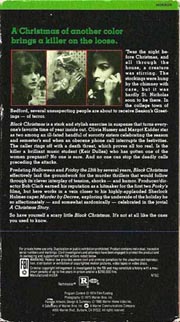
Year
1974
Run Time
98 minutes
Director
Bob Clark
VHS Distributor
Warner Home Video
Relevant Cast
John Saxon, Margot Kidder, Olivia Hussey
Relevant Crew
[none]
Tag Line
If This Movie Doesn’t Make Your Skin Crawl IT’S ON TOO TIGHT!
Rating
R
Clamshell?
No
Quote
[none]
Masterpiece?
No
More 31 Days of Horror V
-
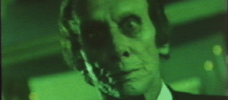
The Dead Don’t Die
1975 -
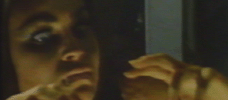
The Brides Wore Blood
1972 -
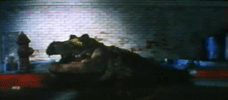
Alligator
1980 -
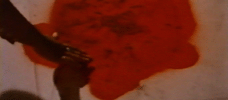
Girl in Room 2A
1973 -

Zombie High
1987 -
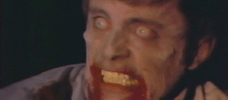
Deathdream
1974 -

Link
1986 -
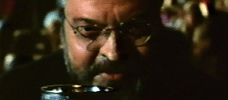
The Witching
1972 -
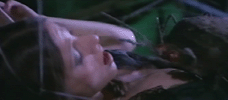
Nude for Satan
1974 -
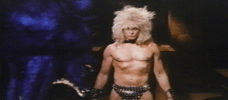
Rock ‘n’ Roll Nightmare
1987 -
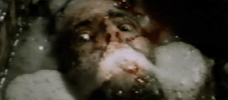
The Strangeness
1985 -
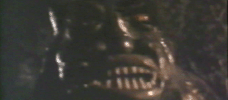
Brides of the Beast
1968 -

Seven Deaths in the Cat’s Eye
1973 -

The Curse of Bigfoot
1976 -
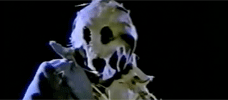
Dark Night of the Scarecrow
1981 -

Chopping Mall
1986 -
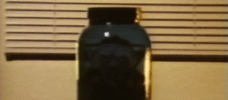
The Jar
1984 -

Killer Workout
1986 -
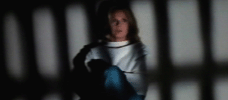
Moon in Scorpio
1987 -
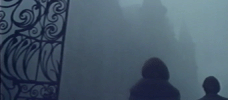
The Legend of Hell House
1973 -
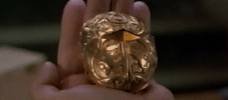
Cronos
1993 -

Black Christmas
1974 -
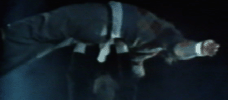
Grave of the Vampire
1974 -

Rana: The Legend of Shadow Lake
1975 -

Blood Voyage
1976 -

Fiend
1981 -

Anguish
1987 -
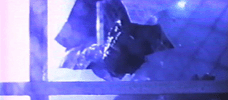
The Chilling
1989 -

Attack of the Beast Creatures
1985 -
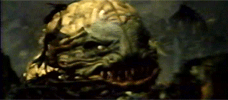
Humanoids from the Deep
1980
We don’t do comments anymore, but you may contact us here or find us on Twitter or Facebook.



